When you think of Africa, good food and a full belly might not be the first things that come to mind. However, take a leisure stroll around any city on the continent, and you’ll soon understand why African street food is not just a part of the culture, but also a part of the soul, as mentioned in Salif Keita’s seminal hit song, Africa.
Embark on a sensory journey as you stroll around any city in Africa. The continent’s love for good food is palpable, especially when it’s food that fits in your hands, is served on the go, and is packed with many flavours. From the subtle and spicy to the bold and fiery, African street food is a feast for the senses.
Prepare to be amazed by the variety of African street food dishes. Here is a list of some popular ones and where to eat them:
1. Zanzibar barbeque, fried seafood and pizza: Sunset at Forodhani Gardens, Stone Town.
This is why eating in Zanzibar is exciting. For the boys who curl their bodies into balls as they dive into the ocean, the tourists awed by the spectacle, families strolling with ice creams and juices in their hands; and the tables set up for the nightly food market. Tables are laden with barbecue and fried seafood (octopus, kingfish, shark kebabs, tuna, lobster, calamari, snapper fish and more), tandoori chicken, thumb-sized chips, fluffy coconut bread and warm chapatis. There’s also the “Zanzibar pizza”; a small ball of soft dough that’s flattened into a crepe and fried with beef or chicken, an onion, green pepper, egg and soft cheese. You can also have Zanzibar pizza as a dessert with fruit and a chocolate spread.

2. Dodo/keleweele/allocco
Some call it dodo, others kelewele or alloco. Whatever the name, few things are as delicious to eat as fried plantain. It’s sweet and goes well alone as a snack or part of a meal. Warning – it’s greasy. In a diet culture where every calorie is counted and judged and reduced to air frying, fried plantain is a reminder that good food can be worth that extra cup of oil. While it’s a delicious snack, visiting Abidjan, Cote d’Ivoire, would be criminal if you did not make a meal of it. So stop at Allocodrome in Cocody, where fried plantain is the star of every meal, served with grilled or fried chicken, fish, and an onion and chilli condiment. Make it a true Abidjan meal by adding a side of attieke, the warm and fluffy cassava staple that mimics couscous. Try the dollop of mayonnaise that’s so beloved in Ivorian street food, even if it’s not your condiment of choice.
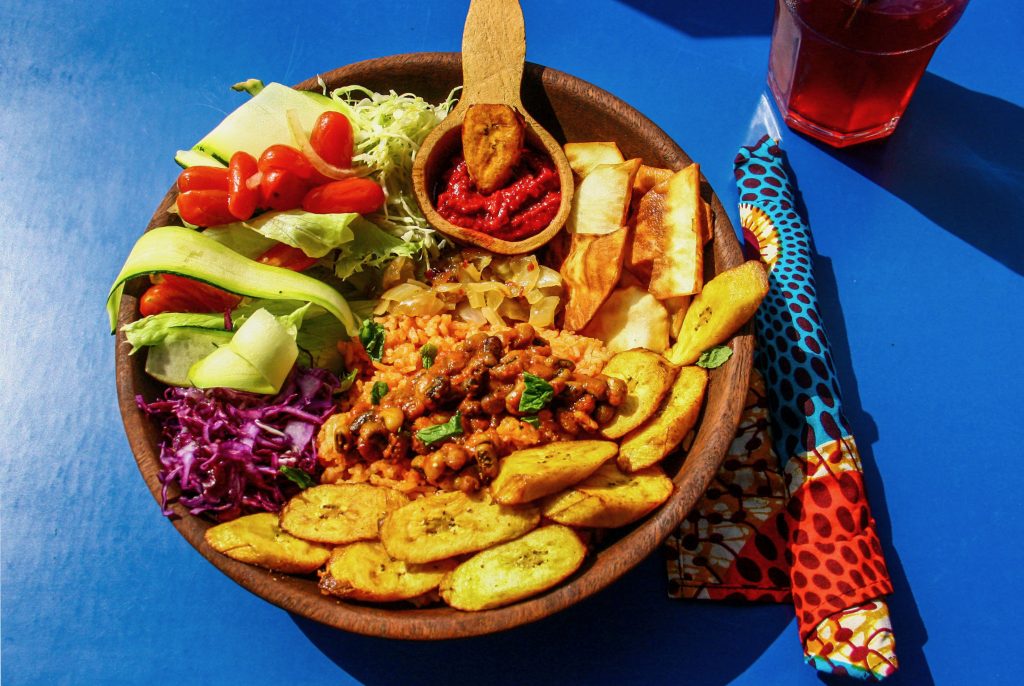
3. Koshari:
The taste of Cairo, followed by the inevitable lingering memories of everything, makes Egypt an incredible journey, especially the country’s rich ancient and food heritage. In Koshari, these influences come together on a plate layered with rice and vermicelli, brown lentils, macaroni, chickpeas and a smooth tomato sauce that gets its subtle yet tantalising flavour from fresh garlic, ground cumin, coriander and red pepper, ghee, tomato paste, vinegar, a pinch of salt and pepper. It’s topped off with onion dusted in flour and fried until crispy and dark brown for a woody endnote to every bite. It’s found everywhere in Cairo and Luxor. Or get your taste of Egypt’s national dish on a historical tour of the 700+-year-old Khan el Khalil bazaar, down El Moez street, one the oldest streets in the city with “the greatest concentration of medieval architectural treasures in the Islamic world”.
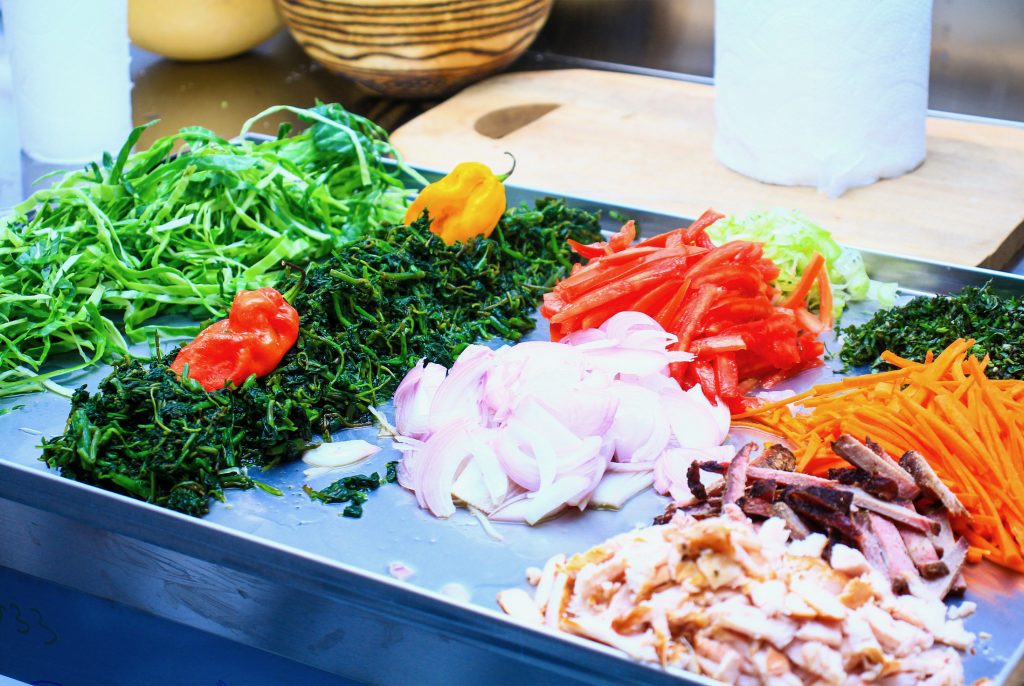
4. Suya
Suya would be another barbeque if not for the thin slivers of grilled meat marinated in oil and a blend of spices. The skewers are dusted in suya spice before being served with raw onion. Suya originated in Northern Nigeria and is a taste of Anglophone West Africa and is found around the streets of Nigeria, Cameroon, Ghana, Liberia and Sierra Leone. While it has made the leap from street corners to restaurant menus, suya is best enjoyed at a street corner, bought from a mai suya (suya seller) or a suya joint like the University of Suya in Ikeja, Lagos and Suya Planet in Monrovia, Liberia.

5. Diti
Have you tasted Francophone West African cuisine without trying a Dibiterie? To the eye, dibi is just grilled meat – usually sheep but often offal and sometimes chicken – served with baguettes, onions, and mustard. To people whose food this is, dibi is a love letter to the time-worn tradition of cooking meat over open flames. It gets its tenderness from the hours-long slow cooking over medium to low coals instead of high flames, making every bite succulent. They’re ubiquitous in Mali, Senegal, Niger, Gabon, and Ivory Coast. While it’s served to-go, getting Dibi is a social call accompanied by elaborate greetings and conversations with the seller and other customers. Arrive hungry and in the mood to be social. After all, there’s nothing like a solitary food experience in these parts of Africa.

6. Rolex
Uganda barely features on Africa’s food map, but make no mistake—the country knows how to do street food, and none is as famous as Rolex. The base is the East African staple of chapati (always better when hot), with a filling of fried eggs and tomatoes. It’s a simple, filling, and consistent reminder that Uganda is many things, chief among them being creative and vibrant.

7. Lamu Island Street food
In Lamu, an ancient stone town on an island along the Swahili coast, street food doesn’t come with one defining dish or taste. While every moment here feels like a walking tour through antiquity, the ancient town that has seen traders from China, India, Arabia and Europe for hundreds of years gives itself to food experiences. In addition to taking in sights like the museum, German post office, and Swahili House, you can turn walking into a taste of Lamu by using your sense of smell. Smelling meat on the grill? Follow it to find mishikaki, beef skewers, mutton and goat meat. Catching a whiff of cardamom? You’ll find mahamri, a doughnut made with cardamom and coconut milk. Other street offerings include grilled octopus, nyama choma (barbeque), bhajia, and samosas. All these are found elsewhere in Kenya and include mutura. It is intestines encased with meat, blood, onion, salt, pepper and chillis.
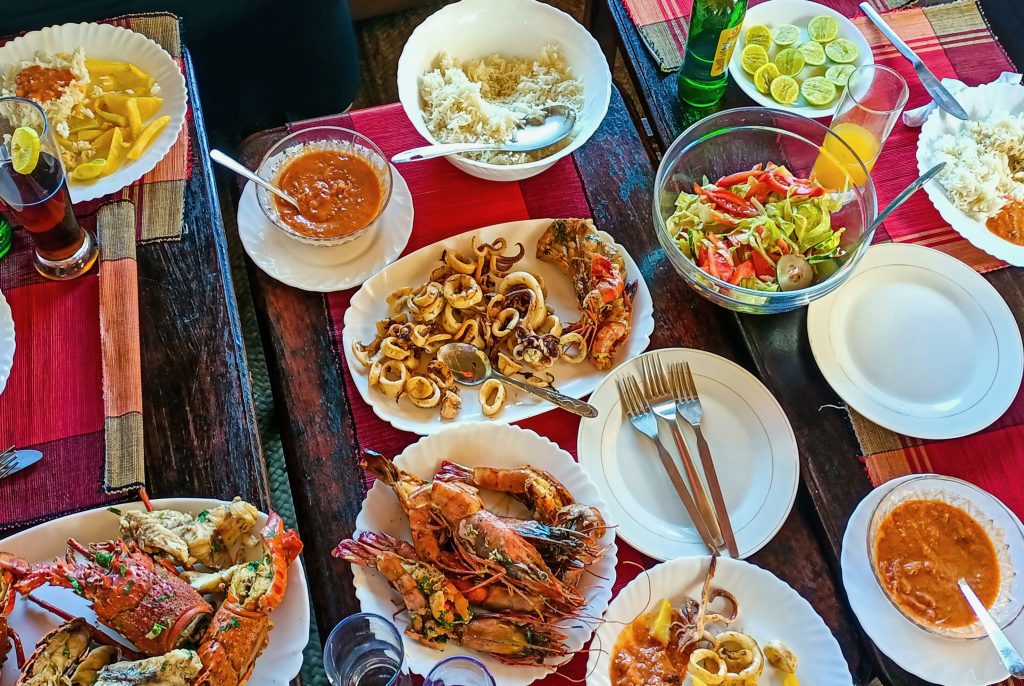
8. Magwinya/Vetkoek/Puff Puff/Mandazi
Magwinya or Vetkoek in Southern Africa, Puff Puff in West Africa or Mandazi in East Africa. If one street food is found almost everywhere in Africa, it has to be fried dough balls. As magenta in South Africa, it’s a breakfast meal that can be accompanied by achaar (spicy mango relish), liver pate or cured fish (snoek). As mandazi on the East African coast gets its sweetness from coconut milk, puff puff has also been transformed into a dessert coated with chocolate syrup.
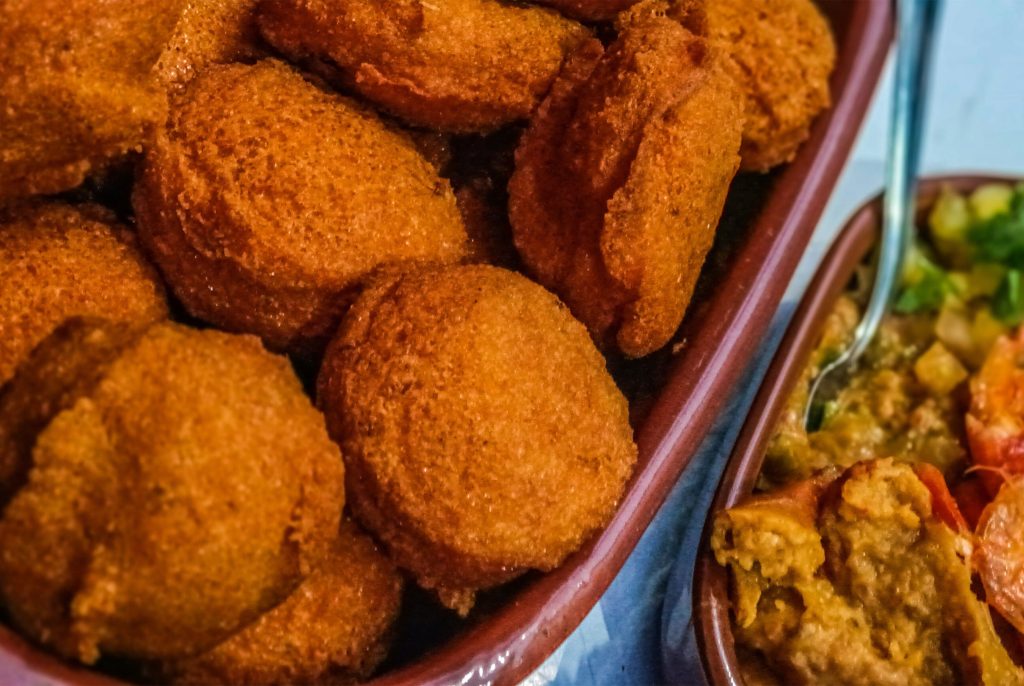
9. Kota
You haven’t fully tasted South Africa if you have not had a kota. Kota is a hollowed-out bread loaf filled with atchaar and chips. You can also build on it by adding a burger patty, fried egg, sausage, cheese, polony, and various other toppings. Kota is not just popular; it is a defining feature of township food in South Africa and even inspired an annual Kota festival in Soweto.
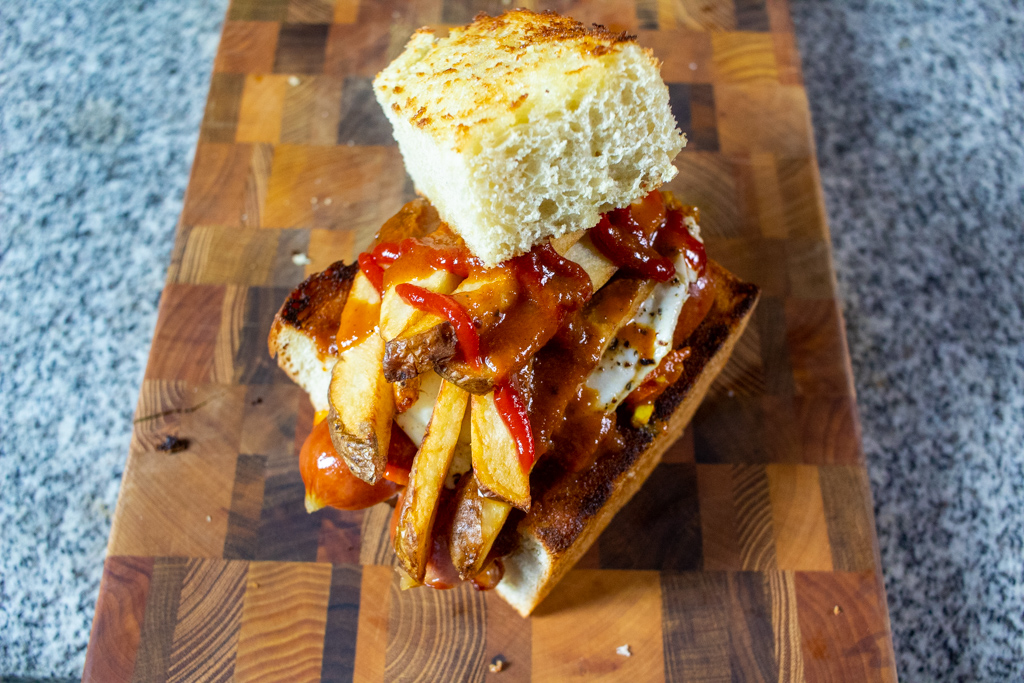
10. Rojo and Kilishi
It wouldn’t be a feature on top street food in Africa without a special shout-out to Rojo and kilishi, two dishes from opposite sides of the continent with taste profiles that are just as distant. Rojo is a Zanzibari favourite, and it is best enjoyed at Darajani market during the day and at Forodhani Gardens at night. It mixes flour, coconut milk, potato cubes, and water flavoured with garlic, chilli paste, lemon juice, and salt. Turmeric gives it a yellow hue; raw mango adds a lingering tangy sensation on the tongue. Additional texture and flavour come from bhajia, mashed potatoes, and coconut chutney served as toppings.
Kilishi has been compared to jerky. The paper-thin slices of smoked meat get their infamous kick on the taste buds from crushed chilli. In Nigeria, a country that has a taste of extra spicy food, Kilishi is one of the hottest things you’ll eat.
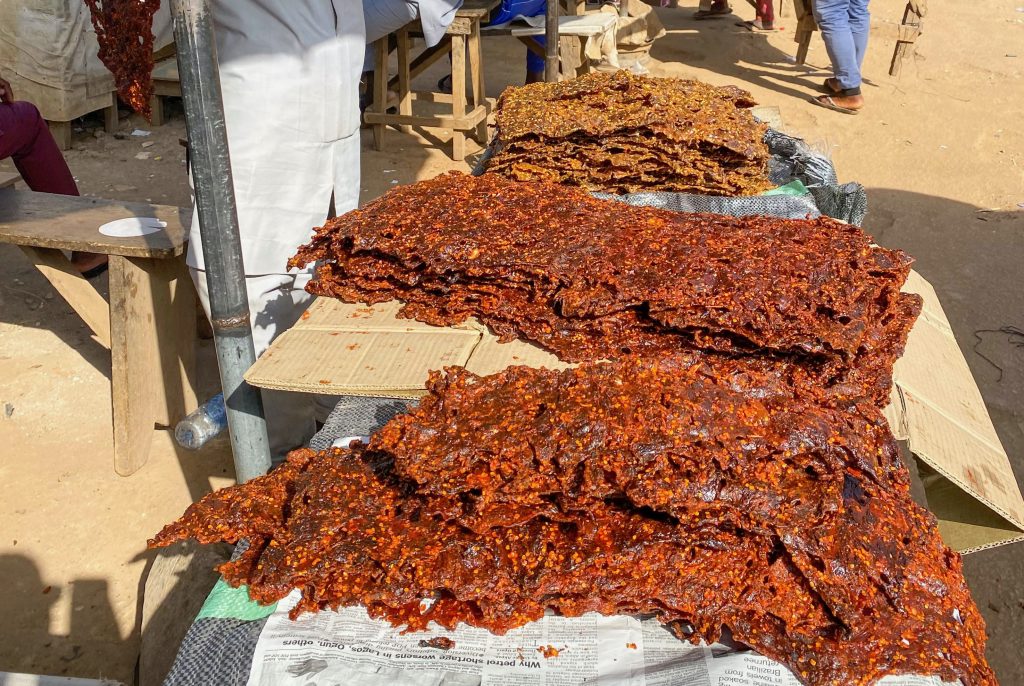
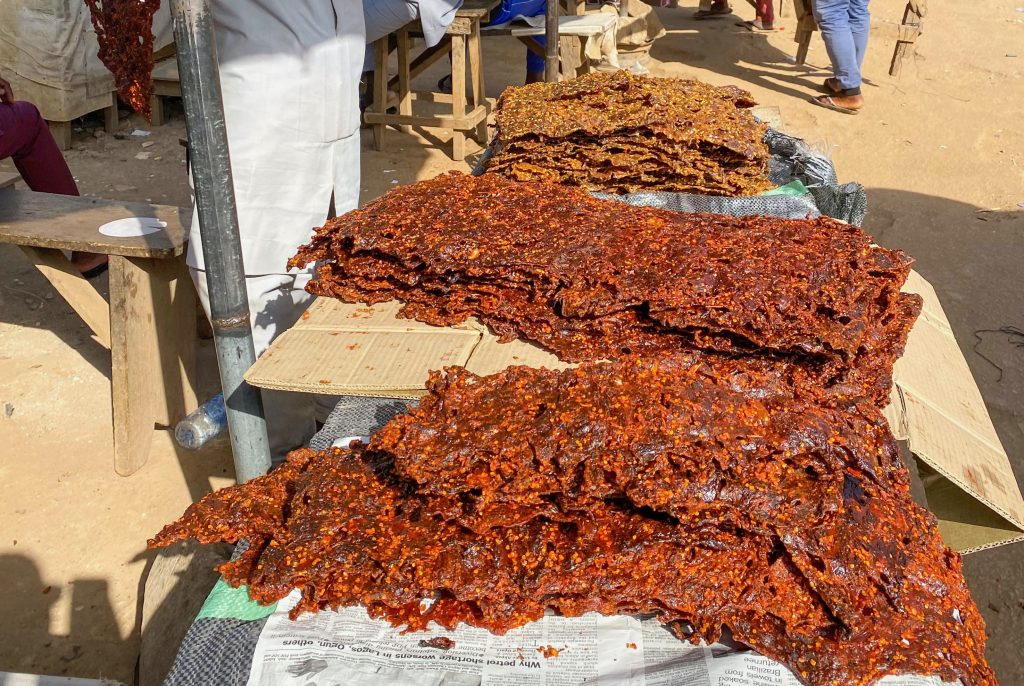
<script src=”https://bird.africanofilter.org/hits/counter.js” id=”bird-counter” data-counter=”https://bird.africanofilter.org/hits/story?id=1680&slug=bird-ten-x-african-street-food” type=”text/javascript” async=”async”></script>


